A Ukrainian reading of DJ Shadow’s ridiculously good new video, frame by frame.
When legendary California DJ and producer DJ Shadow teamed up with East Coast emcees Run the Jewels on the thumping battle anthem “Nobody Speak” earlier this summer, Ukraine didn’t really take much notice. Then came the music video.
The internet-breaking video is not only set in one of Kiev’s landmark buildings, it’s also—according to the vigorous online commentariat at least—bursting with political symbolism. The video depicts a kind of international summit, where the U.K. and U.S. delegates, grey-haired and in stiff suits, go from battle rapping to brawling, drawing in the rest of the world’s leaders for an epic ice hockey-style fight–complete with chair-throwing and barnyard animals on the loose. DJ Shadow’s one statement about what it all means is this bit of snark on YouTube: “We wanted to make a positive, life-affirming video that captures politicians at their election-year best. We got this instead.” But that doesn’t mean the video doesn’t mean much more for Ukrainians. We asked Kiev-based journalist Alexander Kleimenov to give us the view from Kiev, frame by frame.
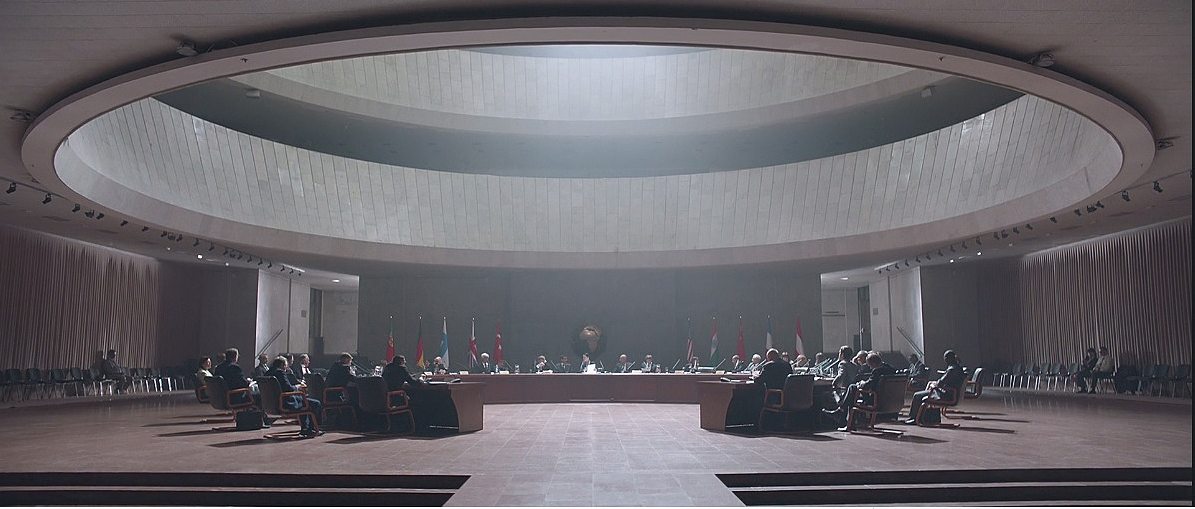
Alexander Kleimenov: Anyone who grew up in Soviet Kiev in the 1980s can immediately identify this place—the interior of the city’s International Convention Center, or Ukrainian House—from the opening shot. As soon as the “Nobody Speak” video dropped, Ukrainians started feverishly reposting and sharing the video.
Ukrainians feel their country isn’t often on the world’s radar, despite its conflict with Russia causing a ripple effect across the world, and despite all it has to offer, including mind-blowing Soviet architecture and talented people ready to fight with grace. The video’s YouTube comment thread immediately started to fill with proud shouts of “Filmed in Ukraine!” The burning question was: Did they shoot the video in Kiev for a specific reason, or did the producers simply need a low-budget United Nations stand-in? I’m partial to the former explanation.
The video’s cavernous hall is supposed to double as a UN-style assembly room, but to Ukrainians, it’s the former Lenin Museum in Kiev. The Marxist revolutionary actually never visited the city, but a Lenin museum was a must-have for every Soviet Republic’s capital. Kiev opened theirs in 1982. (To make room for it, the city tore down a 19th century building where my grandfather once worked as a bookkeeper for a construction company.)
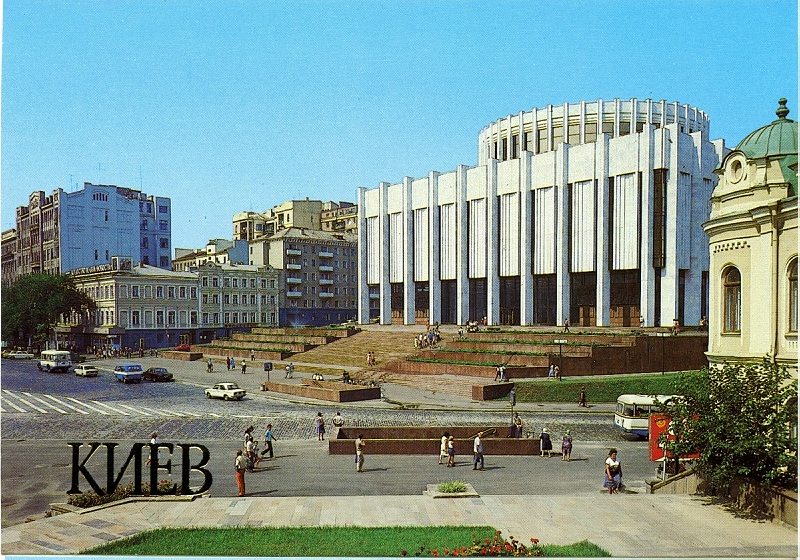
Locals dubbed the colossal building “the reactor”. (This nickname took on a far more sinister tone four years later, when an actual nuclear reactor blew up in Chernobyl less than 60 miles away.) But when it was newly built, adorned in white marble and red granite, it was a dream location for Kiev’s youth to be inducted into the Young Pioneers, a Soviet version of the Boy Scouts. In May 1982, I too lined up with my classmates and took an oath to uphold the values of the Communist Party, and happily got a red pioneer’s scarf tied around my neck, as a white statue of Lenin loomed above our heads.
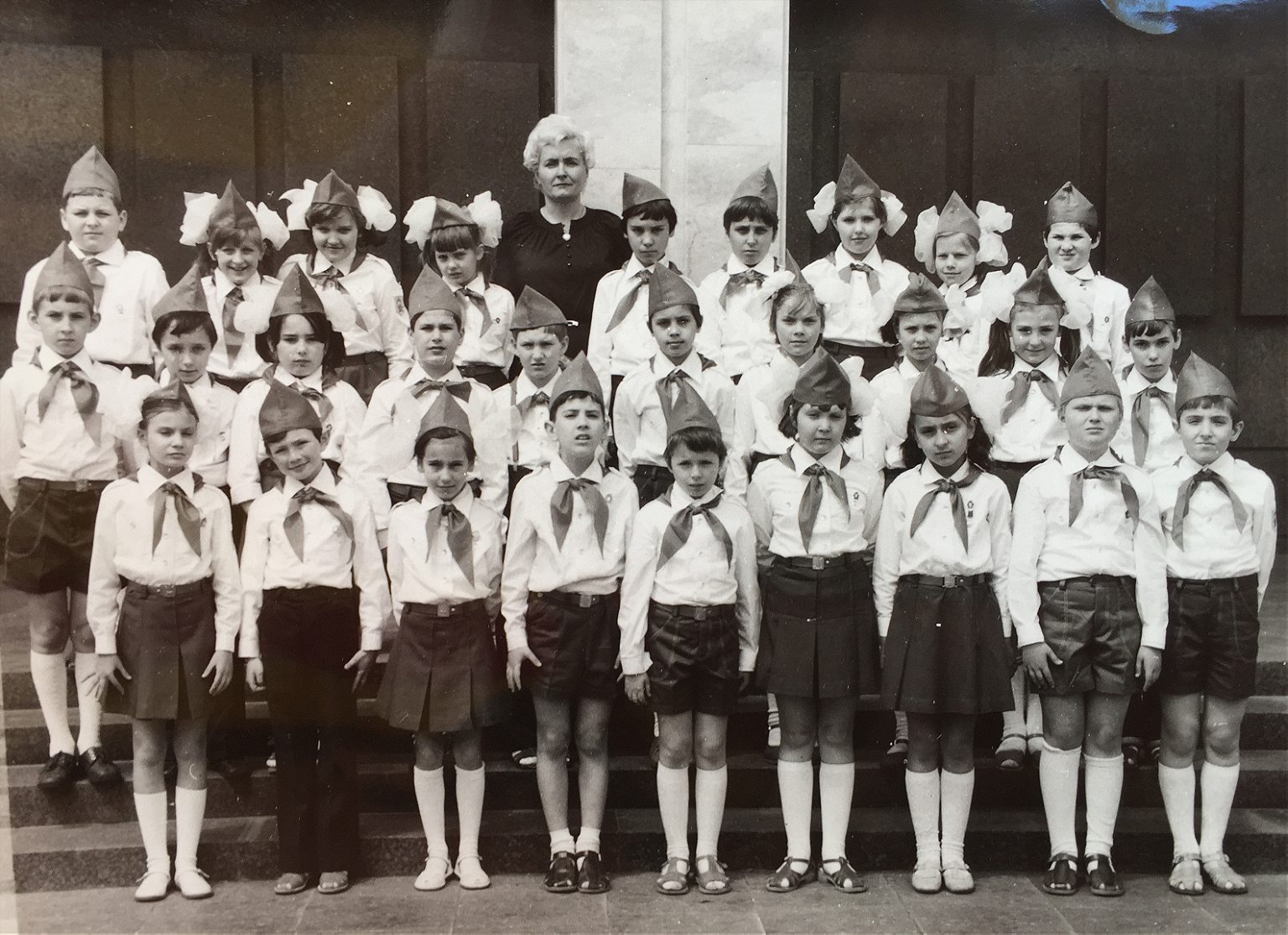
The building, known now as Ukrainskyi Dim (the Ukrainian House), has a contemporary significance for Ukrainians too. After Euromaidan protesters took over the building in January 2014, it became a haven for the cause’s protesters and activists, and a place where people could get medical care, legal advice, and attend lectures and debates and democracy and human rights topics.

Eagle-eyed viewers would recognize this shot of a map of Ukraine. These maps often line the inside covers of business diaries sold here. Radioaktive Film’s executive producer, Jane Yatsuta, tells me the map is simply a prop, but Ukrainians immediately honed in on this. (The flags appearing under the map are those of Ukraine’s 27 administrative regions.)
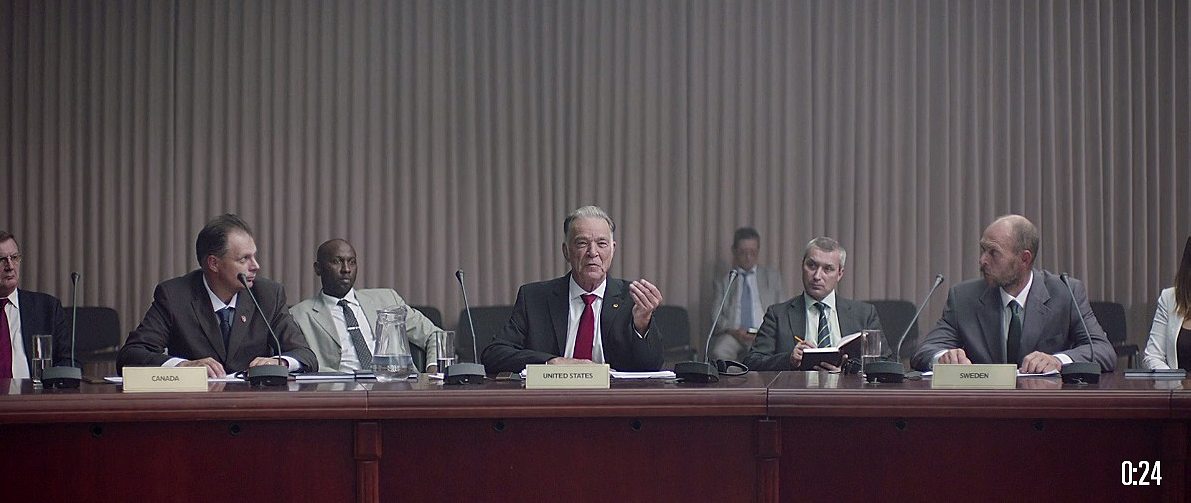
Before the brawl starts, the US delegate is shot in this Last Supper-like composition, between the Canadian and Swedish delegates. (By the way, regarding the other actor in the back, there are black people in Ukraine: many came over from African countries as students in Soviet times—many still do—or they are the children of those students. Zhan Beleniuk, who won the silver medal for Ukraine in Greco-Roman wrestling in the Rio Olympics, is black. We are a diverse country.)
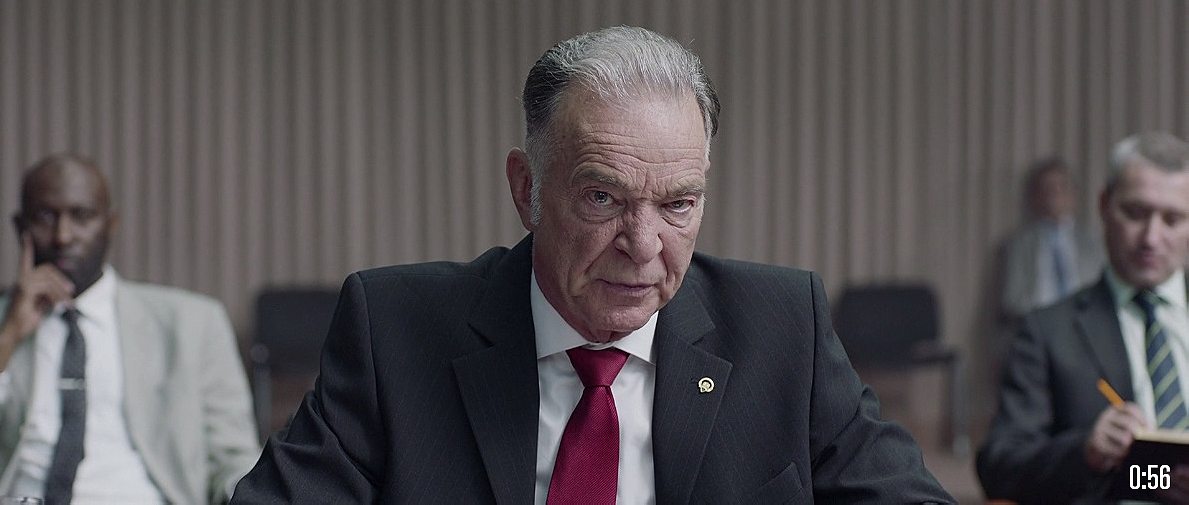
The cast list published on director Sam Pilling’s Vimeo site lists each actor by the country they represent in the video but doesn’t specify if they were portraying presidents, prime ministers, or ambassadors. All but one of the actors are Ukrainian (cameos by Killer Mike and DJ Shadow notwithstanding).
Radioaktive Film was the video’s Kiev-based production company. Their casting director, Nika Bondar, tells me the biggest challenge was finding actors for the leading parts—the U.K. and U.S. delegates—who had to lip-sync the song’s English lyrics (“put coke in the doobie roll woolies to smoke with Snoopy” eg) accurately while fist-fighting. This task, he says, was more demanding even than the stunt fighting. Radioaktive ended up flying in an actor from the U.K.—Ian Bailey—to play the U.K. delegate. Bondar says that when casting the U.S. delegate, they gave director Sam Pilling a list of 50 actors, secretly hoping he would pick the one they knew was the best candidate: Ukrainian actor Igor Tsyshkevich. He got the job, and ended up with the most lip-synched lines.
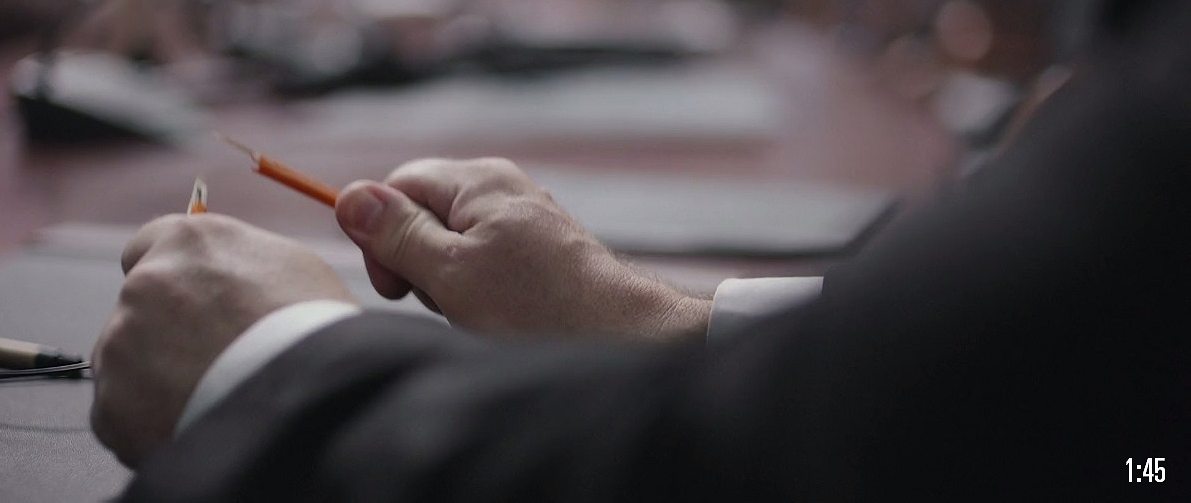
The pencil snap is significant to Ukrainians. At a press conference in Russia after he fled Ukraine during the Euromaidan protests in February 2014, our deposed president Victor Yanukovich tried to break his pen in half. He did not succeed. (Giving rise to this excellent headline “Victor Yanukovych Ends Press Conference with Failed Assault on Pen.”) Yatsuta says people are free to read what they want into this.
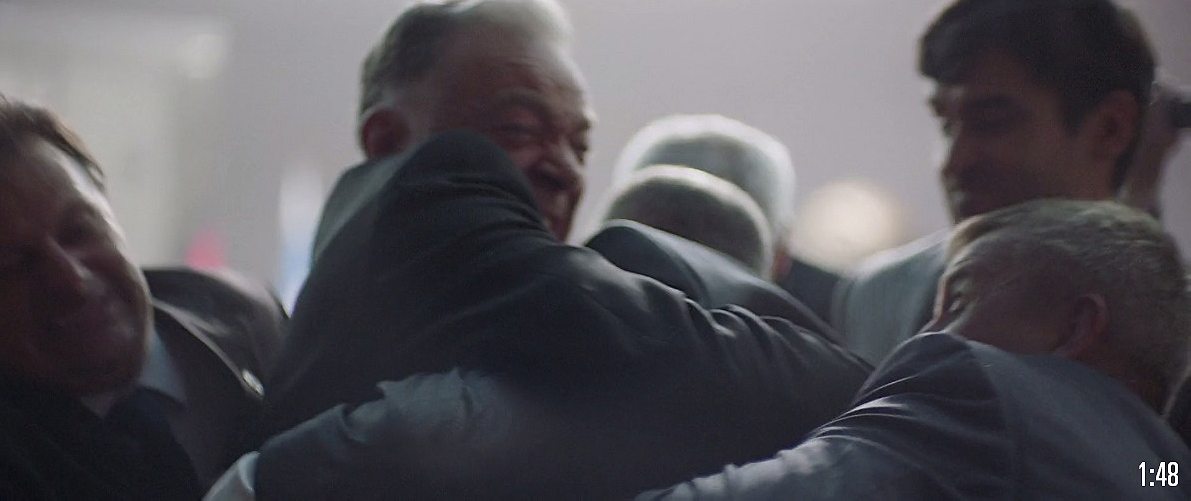
Many Ukrainians believe the brawl is a nod to the frequent fist-fights in Ukraine’s parliament, or Verkhovna Rada. One YouTube user, with the telling name “Ultraviolence” simply commented under the video, “Our Rada”. (Fights in the Rada are sometimes so visually spectacular that they’ve been compared to the Golden Ratio and to Renaissance paintings.) Radioaktive Film maintains that it’s only a music video, but parliamentary violence is a rich enough topic, prevalent enough in Ukraine and beyond to have its own blog.
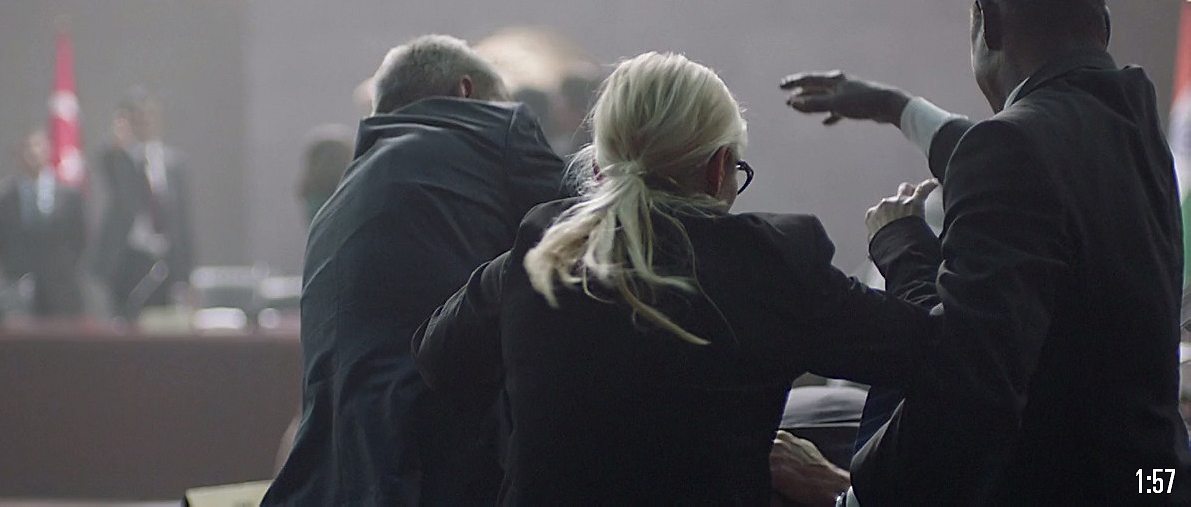
Ukrainians were quick to note that this blonde woman resembles pro-Europe Ukrainian parliament member and former prime minister, Yulia Tymoshenko, one of Victor Yanukovych’s political nemeses. (She co-led the 2004 Orange Revolution that helped oust him, but he later defeated her in presidential elections in 2010). In October 2011, she was convicted of abuse of power and embezzlement, and sentenced to seven years in prison, but many governments felt that the charges were politically motivated. Parliament voted for her release after the 2014 Euromaidan revolution.

Oleg Burov played the Swedish delegate, and he’s not an actor, but a stuntman. He hadn’t even seen the video until I called him for an interview. He says it wasn’t clear at casting what the video would be about, but he was given the song lyrics and diligently went through them with his wife, whose English is better than his. He recalls that shooting started at Ukrainian House in the early morning, and that it wasn’t until rehearsal that the actors figured out what it was all about. The shoot ended at 1 am. During our phone conversation, I heard the neighing of a horse from his end of the line. You can see Burov’s flying skills here, when he makes a slow-motion dive into the brawl.
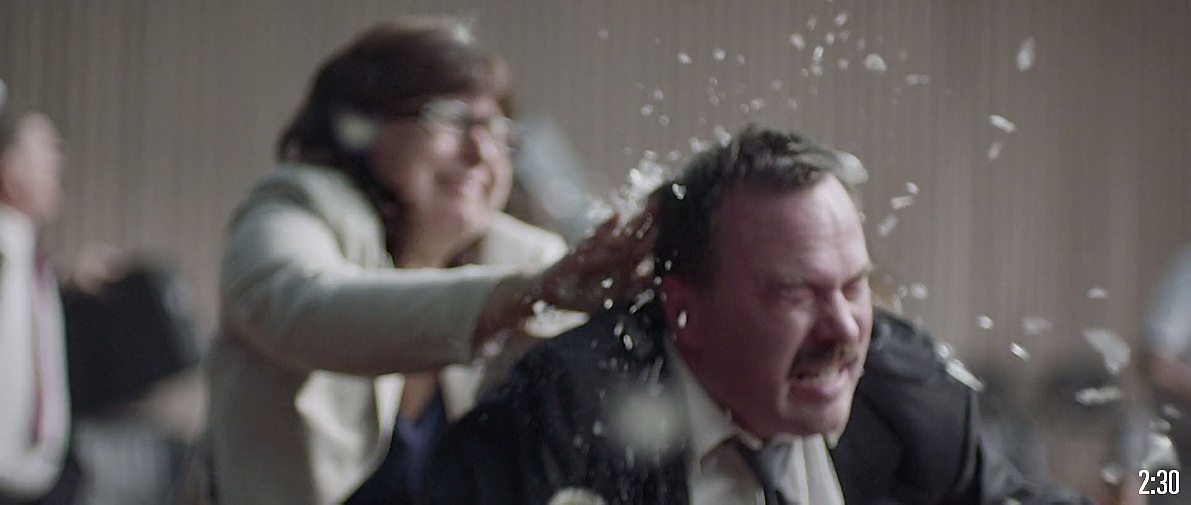
The glasses smashed over people’s heads were made of sugar.
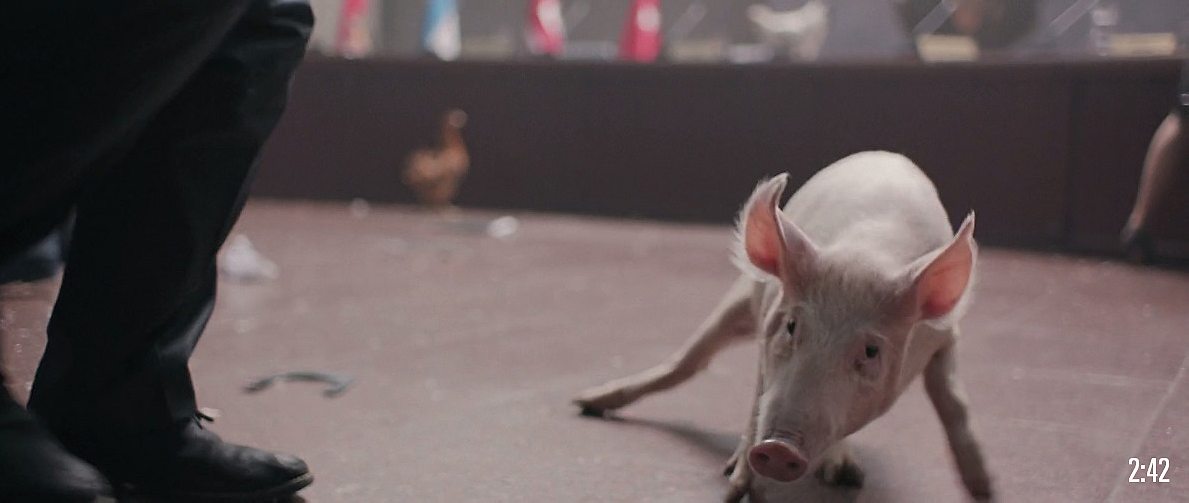
Yatsuta says the crew was worried that the pig would get riled up by the chaos and be hard to control, so they brought two pigs to the set, thinking they would have a calming effect on each other. But the pigs were stunned by all the activity, and their hooves kept slipping on the slippery granite floor—a classic feature of Soviet monumental architecture—so when the time came to shoot the scenes, they just stood still and huddled with their noses together. Eventually the crew had to take one of them away to get the other one to move just a little.
In addition to the pig, the video has cameos by some brown and white chickens. A few comments under the YouTube video suggest the animals might be a reference to Animal Farm. One describes them as “pork, chickenhawk, and an ironic symbol of peace”. Another writes: “Pig = Putin, Russia, Chicken = France”. A Russian commenter writes that the pig symbolizes “the Russian neighbor”, meaning Ukraine, where pig lard is a national food staple (unsurprisingly, the comments section devolved into a bit of a brawl itself from there).
The only thing this pig reminds me of is my day getting sworn in to the Young Pioneers on that same shiny, granite floor. By the end of it, I was ill with mumps, which is “svynka” (“little pig”) in Ukrainian. Make of that what you will.
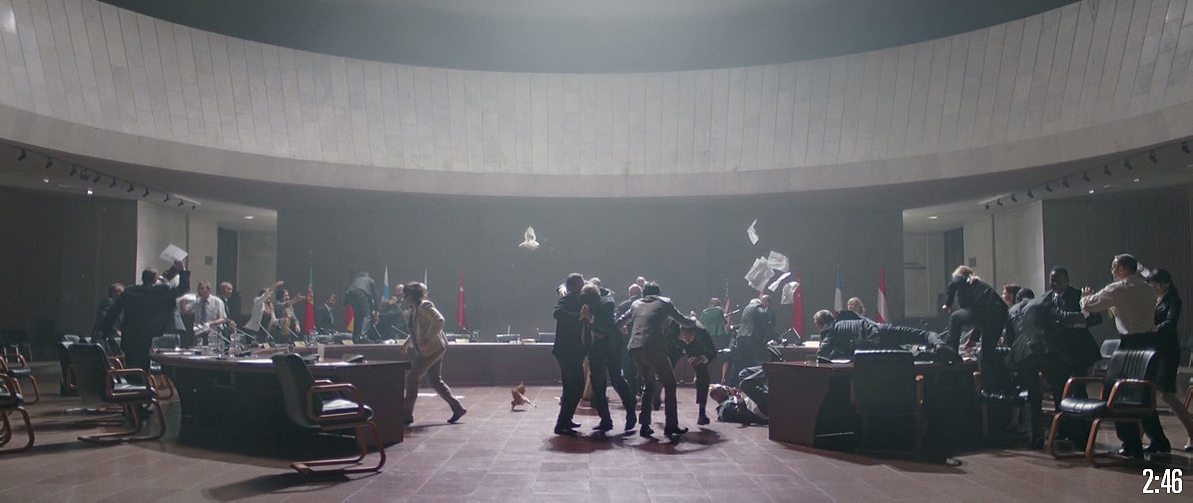
The white chicken appears to be a kind of sarcastic peace dove. Yatsuta says the chickens had to be tossed in the air by a professional animal handler. (No animals were harmed.) This isn’t the first time Ukrainians have seen this hallowed place getting trashed. At the height of the Euromaidan protests in the winter of 2014, the riot police ran protesters out of the building and destroyed what had become a haven for the protesters, which included a library.
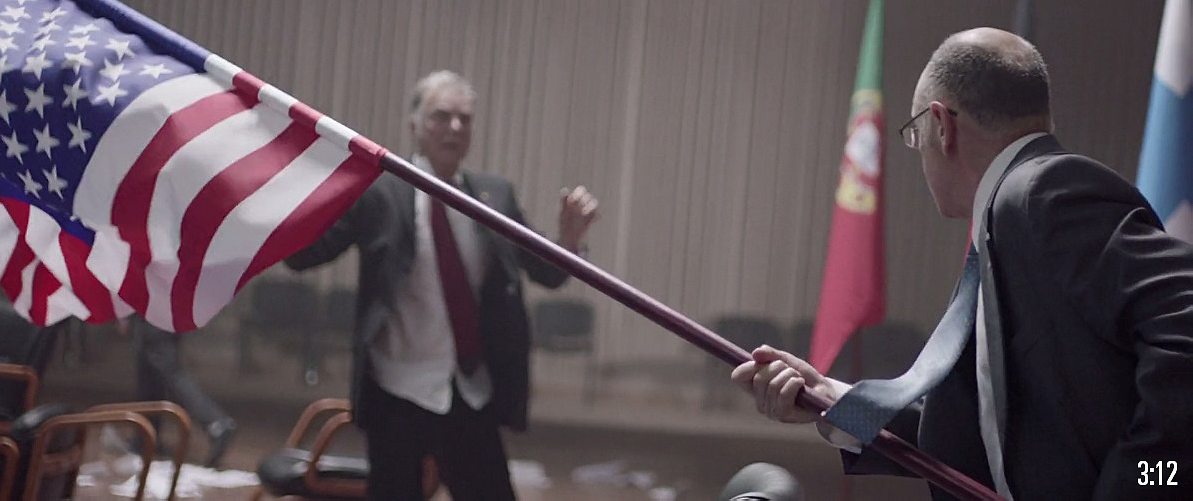
The U.K. rep threatens his U.S. counterpart with an American flag. This might seem an unlikely scenario, but according to Yatsuta, the producers didn’t want to reference any existing conflicts—there is no Ukrainian or Russian flag on display, for instance, and the director purposefully went for the most improbable set up. (Although these days, anything seems possible in geopolitics.)

This scene echoes the raising of the American flag on Iwo Jima, but Yatsuta insists there’s no connection. The internet, of course, had plenty to say. Under the YouTube’s video, one comment reads: “The classic American approach of diplomacy. Stab them with the flag and claim their country.” To which another commenter replies, “Except […] it’s actually the UK guy trying to stab the U.S. one with the American flag.” Touché.
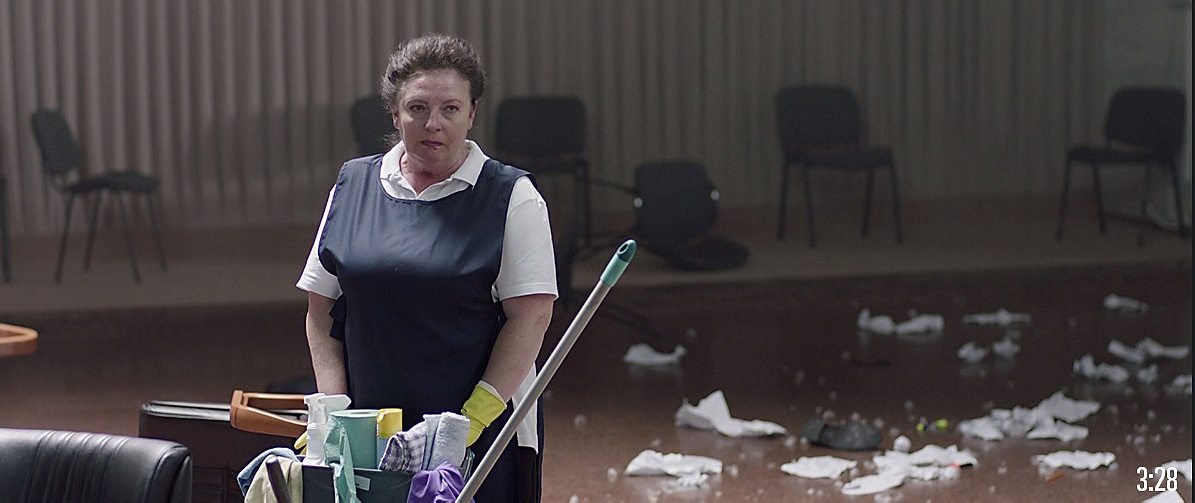
Commenters seem to agree on what the cleaning lady represents: that ordinary people have to pick up after politicians’ messes. In Ukraine, at least, the cleaning lady is sometimes the biggest boss, because once she washes the floors she won’t let anyone step on them.
No computers, laptops, tablets, or smartphones were destroyed in the making of the video. Because none of the ‘world leaders’ had any.
For their part, the crew at Radioactive Film are spending their August on a well-earned vacation. They say I and my fellow Ukrainians are reading too much into the video.
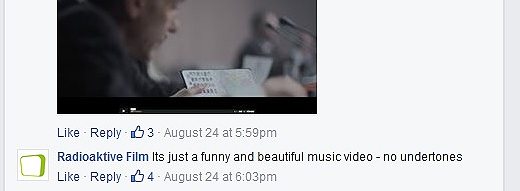
Listen to Alex Kleimenov breaking down “Nobody Speak” for PRI’s The World: